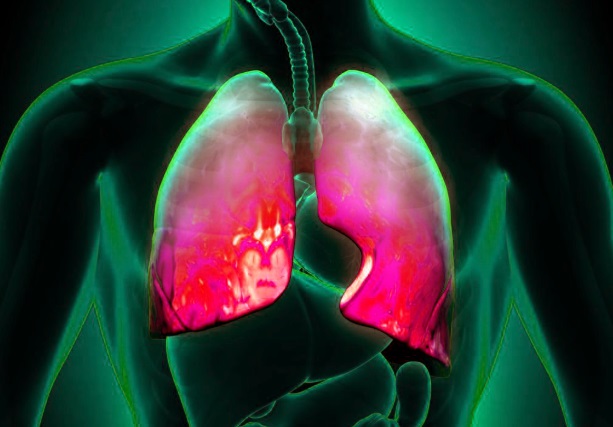Regulatory T Cells and Cytokines in Post COVID Lung Damage and Idiopathic Fibrosis
Nikhil Prasad Fact checked by:Thailand Medical News Team Jan 19, 2025 3 months, 5 days, 16 hours, 53 minutes ago
Medical News: Understanding the Connection Between Two Serious Lung Conditions
The devastating impact of COVID-19 has gone beyond the acute phase of the disease, leaving many survivors grappling with long-term complications. Among the most concerning of these is post-COVID-19 pulmonary fibrosis (PCLF), which bears similarities to idiopathic pulmonary fibrosis (IPF), a severe chronic lung disease. A groundbreaking study by researchers from the Department of Medical and Surgical Sciences & Neurosciences at Siena University Hospital, Italy, sheds light on the immunological underpinnings of these conditions.
 Regulatory T Cells and Cytokines in Post COVID Lung Damage and Idiopathic Fibrosis
Regulatory T Cells and Cytokines in Post COVID Lung Damage and Idiopathic Fibrosis
This
Medical News report explores the complex dynamics between regulatory T cells, immune responses, and cytokine profiles, providing new insights into their role in the development and progression of lung fibrosis. It also highlights the importance of understanding these mechanisms for better treatment strategies.
Study Design and Participant Details
The research, conducted at the Rare Lung Disease Center of Siena University Hospital, involved 100 patients and eight healthy controls. The participants included individuals diagnosed with PCLF following severe COVID-19 infection and those with IPF. Blood samples were collected and analyzed using advanced flow cytometry techniques and cytokine quantification assays to compare the immune profiles of these groups.
By focusing on T-cell subsets and cytokine expression, the researchers aimed to uncover the shared and distinct immunological pathways that drive these fibrotic conditions.
Key Findings: A Deep Dive into Immunological Profiles
One of the most striking findings of the study was the altered T-cell profiles in PCLF and IPF patients compared to healthy controls. The study revealed the following key differences:
-T-Cell Subsets
PCLF patients exhibited higher levels of naive T-helper (Th-naïve), T-helper effector (Th-effector), T-cytotoxic naive (Tc-naïve), and regulatory T-cytotoxic (Tc-reg) cells compared to IPF patients. In contrast, IPF patients showed elevated levels of CD8+ T cells, indicating a different immune activation pattern.
-Regulatory T Cells
T-regulatory cells, known for their dual role in suppressing or promoting fibrosis, were found in higher proportions in both PCLF and IPF patients compared to healthy individuals. However, the increased levels of Tc-reg and Th-reg cells in PCLF patients suggest that these cells might contribute to an inflammatory and fibrotic microenvironment.
-Cytokine Profiles
Cytokines are proteins that regulate immune responses and inflammation. In PCLF patients, levels of cytokines such as IL-4, IL-2, TNF-α, and IL-17A were significantly higher than in IPF patients. These cytokines are known to play a role in promoting fibrosis by stimulating fibro
blast activity, collagen production, and immune cell recruitment. For instance, TNF-α was linked to increased TGF-β1 production, a key driver of fibrotic changes.
Interestingly, IL-8 levels correlated with Tc-naïve cell percentages, highlighting a possible interaction between immune cells and cytokine signaling in the fibrotic process.
Immunological Similarities and Implications
The study found significant immunological overlap between PCLF and IPF, suggesting that SARS-CoV-2 infection could trigger pathways similar to those seen in idiopathic pulmonary fibrosis. This finding underscores the need for close monitoring of post-COVID-19 patients for early detection and management of lung fibrosis.
Conclusions: A Step Towards Better Understanding and Treatment
The findings of this study have far-reaching implications for understanding the progression of pulmonary fibrosis. By analyzing immune cell subsets and cytokine patterns, the researchers highlighted the complex interplay of pro- and anti-inflammatory signals in shaping the disease trajectory. Here are the key takeaways:
-Role of Regulatory T Cells: The study confirms the involvement of T-reg cells in both PCLF and IPF. While these cells are crucial for immune balance, their overactivation can contribute to fibrotic processes.
-Cytokine Dysregulation: Elevated levels of cytokines like IL-4 and TNF-α in PCLF patients reflect a pro-fibrotic immune environment. Targeting these cytokines might offer therapeutic opportunities.
-Shared Pathways: The immunological similarities between PCLF and IPF suggest that SARS-CoV-2 infection could activate mechanisms common to chronic fibrotic diseases.
-Clinical Relevance: Identifying patients at risk for fibrosis early on is critical for timely intervention. Advanced imaging and immune profiling could play a key role in predicting disease progression.
In conclusion, this study not only deepens our understanding of the immune mechanisms underlying lung fibrosis but also paves the way for developing targeted therapies to manage these debilitating conditions. Continued research in this area is essential to improve outcomes for patients with PCLF and IPF.
The study findings were published in the peer-reviewed journal: Immunity, Inflammation, and Disease.
https://onlinelibrary.wiley.com/doi/10.1002/iid3.70123
For the latest COVID-19 News, keep on logging to Thailand
Medical News.
Read Also:
https://www.thailandmedical.news/news/favipiravir-that-was-used-to-treat-covid-19-actually-causes-lung-inflammation-lung-damage-and-lung-fibrosis
https://www.thailandmedical.news/news/67-9-percent-of-patients-who-had-severe-covid-19-pneumonia-have-evidence-of-fibrosis-three-months-after-discharge
https://www.thailandmedical.news/news/covid-19-causes-inflammation-tissue-injury-and-fibrosis-of-the-respiratory-tract-and-lungs
https://www.thailandmedical.news/news/covid-19-is-not-mild-as-most-will-develop-lung-fibrosis-10-percent-of-all-lung-transplants-in-u-s-now-go-to-post-covid-patients
https://www.thailandmedical.news/news/individuals-who-had-covid-19-without-pneumonia-at-higher-risk-for-pulmonary-fibrosis-than-those-with-pneumonia
https://www.thailandmedical.news/news/the-uniqueness-of-post-covid-lung-fibrosis-the-increased-expression-of-atp12a-protein
https://www.thailandmedical.news/news/breaking-doctor-from-uc-san-diego-warns-of-new-covid-19-manifestations-such-as-dermatomyositis-muscular-pains-and-alerts-about-lung-fibrosis
https://www.thailandmedical.news/news/44-4-percent-of-indians-exposed-to-sars-cov-2-suffer-from-post-covid-lung-damage
https://www.thailandmedical.news/news/covid-19-news-sars-cov-2-triggers-epidermal-growth-factor-receptor-signaling-pathway,-leading-to-lung-fibrosis-and-lung-cancer-erlotinib-helps
https://www.thailandmedical.news/news/covid-19-news-brazilian-study-shows-that-sars-cov-2-infections-induce-more-pronounced-lung-extracellular-matrix-deposition-than-other-causes-of-ards
https://www.thailandmedical.news/news/unraveling-the-enigma-of-post-covid-lung-fibrosis-maladaptive-signals-drive-fibroproliferation,-cedars-sinai-researchers-reveal
https://www.thailandmedical.news/news/breaking-silent-tsunami-of-post-covid-lung-fibrosis-occurring-among-many-indian-researchers-warn-that-even-asymptomatics-are-at-risk
https://www.thailandmedical.news/news/long-covid-news-stanford-study-shows-that-innate-immune-cell-activation-causes-lung-fibrosis-that-can-lead-to-long-covid-breathing-problems
https://www.thailandmedical.news/news/irrespective-of-severity-40-percent-of-post-covid-pneumonia-patients-still-have-impaired-lung-diffusion-and-22-percent-developed-lung-fibrosis-a-year-
https://www.thailandmedical.news/news/great-news-most-post-covid-individuals-will-develop-lung-issues-similar-to-idiopathic-pulmonary-fibrosis-ipf-with-potential-serious-outcomes
